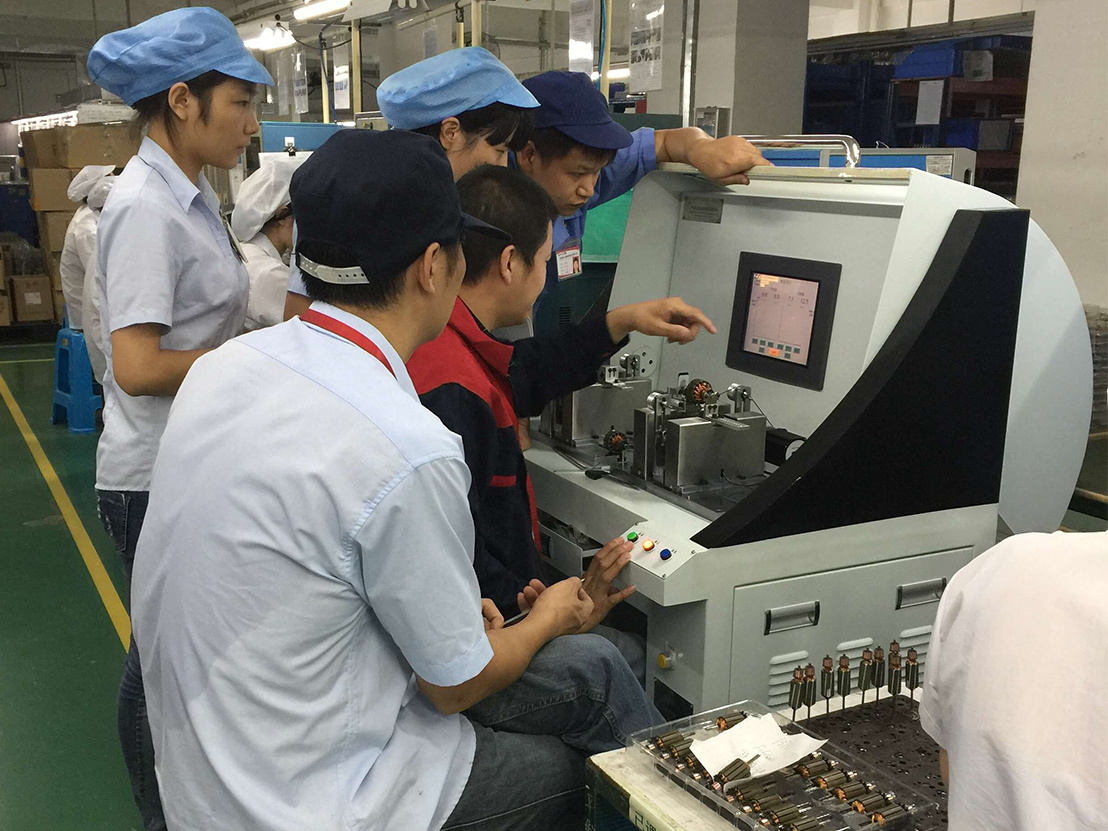Finally found an article! Explain in a popular way how the dynamic balancing machine works
Published:
2019-11-19 14:35
In order to solve various problems, people have invented countless machines. There are a wide variety of balancing machines, from static balancing machines to today's fully automatic balancing machines. Henry Martinson proposed the first balancing model in 1870. Regardless of the static balancer or the dynamic balancing machine, almost all balancing machines follow the same working principle as this model. So how do you know how the balancing machine works? This article will discuss these:
Dynamic balancing machine works
In the state of rotation of the rotor, the phase and magnitude of the imbalance of the rotor are detected, and the weight or the weight is increased or decreased by the manual or auxiliary device, thereby improving the mass distribution of the rotor relative to the axis and achieving the purpose of balancing the rotor. The basic principle of dynamic balancing machine work.

The dynamic balancing machine mainly detects the phase and size of the rotor unbalance, and some dynamic balancing machines (such as the fully automatic balancing machine) are equipped with auxiliary devices for the weighting and de-weighting of the rotor.
How to perform rotor dynamic balance detection with dynamic balancing machine
The dynamic balancing machine is a typical mechatronic device, which can be divided into a mechanical body, a driving part and a transmission part, a signal collecting part, and a central processing unit, each of which performs its own functions and cooperates with each other.
The mechanical body is mainly divided into three parts: the bed body, the swing frame and the head box. It is used for the support of the rotor. The rotors of different weights and specifications need to be equipped with corresponding mechanical bodies to ensure the accuracy of the rotor dynamic balance and the safety of the operators. .
The drive section provides the power to rotate the rotor, and the drive section refers to the process shaft, link shaft or fixture required for the rotor to rotate.
The signal acquisition part is used for the collection and preliminary processing of the rotor vibration signal. It is divided into the speed collection and the centrifugal force. The balance machine first needs to measure the rotation speed of the workpiece to determine the magnitude of the centrifugal force. When the rotor rotates, it will cause the vibration of the mechanical part. The sensor collects the vibration signal and, after some processing, transmits it to the central processing unit.
The central processing unit is mainly divided into a main board, a filter board, an A/D acquisition card, and a passive backplane, which are used for conversion, screening, and calculation of the rotor vibration signal, thereby obtaining the phase and size of the rotor unbalance amount, and then displayed on the screen of the computer. on.
Dynamic balance machine performance indicators
The minimum reachable residual unbalance and the unbalance reduction rate are the main performance parameters of the dynamic balance machine. The minimum reachable residual unbalance is the minimum unbalance of the rotor residual after dynamic balancing, which is the embodiment of the accuracy of the dynamic balance machine; the imbalance reduction rate is the ratio of the reduced unbalance and the initial unbalance after a balance. Balance the balance of machine efficiency. When we purchase a dynamic balancing machine, these two performance indicators need to be considered.
In short, the job of the balancing machine is to measure the imbalance of the rotor.
Related news
2018-12-03
In addition, if you need to buy a balance test machine, please contact us directly.
2018-12-03
Safety operation of the rotor of the motor to be balanced
电机转子装配工的一般操作规程如下: 1、工作前,整理场地,放稳各零、部件,并检查装配使用工具和工作环境是否安全良好。 2、吊放电机机座、底板、定子、转子、轴承等大型部件时必须放好方箱或垫木...
2018-12-03
Rubber roller dynamic balancing machine customer site
Mainly used in the balance correction of high-speed rotating workpieces in various household appliances
2018-12-03
Mainly used in micro-motor rotors, such as automotive motors, household electrical appliances, micro-motors
2018-12-03
[Guangzhou Zhuo Xuanjin] balance machine application range
Dynamic balancing machines are widely used and can be divided into ten categories
2018-12-03
Guangzhou Zhuo Xuanjin various balance machines and their application range
Mainly used in the balance correction of high-speed rotating workpieces in various household appliances, cooling fans, motors, generators, pumps, automobiles, printing, rollers and other industries.

